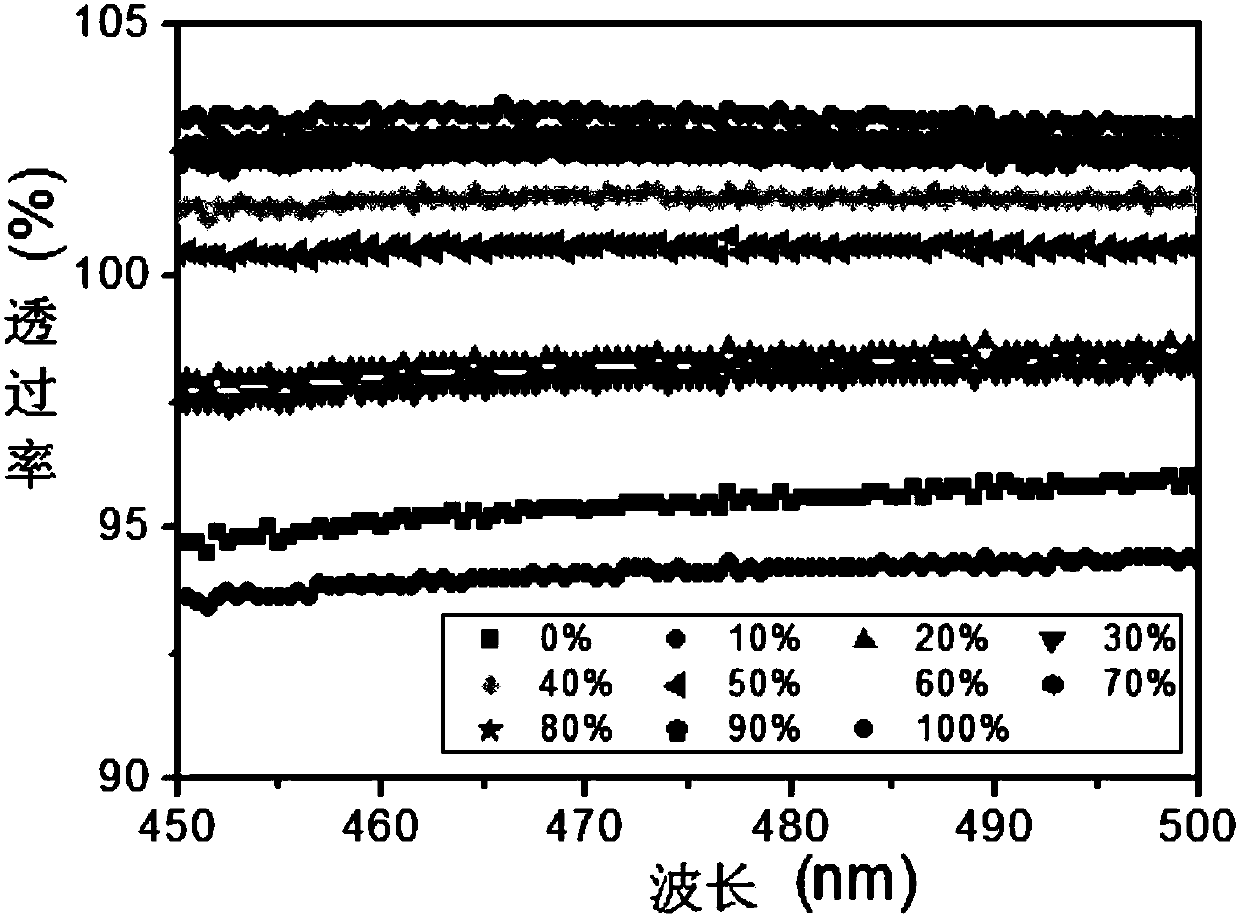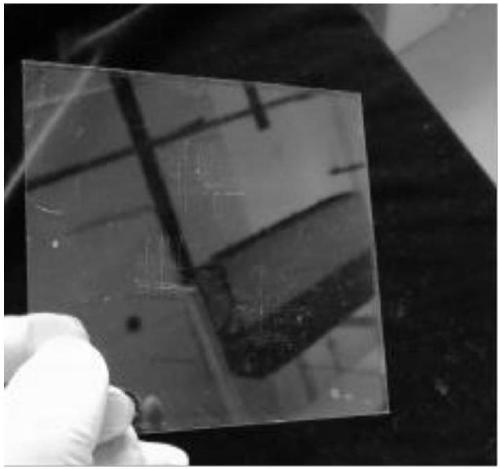Super-hydrophilic self-cleaning coating material composition and preparation method thereof, and super-hydrophilic self-cleaning glass and preparation method thereof
A self-cleaning, super-hydrophilic technology, applied in antifouling/underwater coatings, coatings, paints containing biocide, etc., can solve the problems of coating surface blooming, poor hydrophilic effect, complicated preparation, etc. Achieve low shrinkage, excellent superhydrophilicity, and high bond strength
- Summary
- Abstract
- Description
- Claims
- Application Information
AI Technical Summary
Problems solved by technology
Method used
Image
Examples
preparation example Construction
[0040] The present invention also provides a kind of preparation method of superhydrophilic self-cleaning coating composition, comprises the following steps:
[0041] (1) Preparation of modified nano-silica sol: under acidic conditions, water is added dropwise to the mixture of tetraethyl orthosilicate, alcohol and silane coupling agent to obtain modified nano-silica sol;
[0042] (2) Preparation of super-hydrophilic self-cleaning coating: the prepared modified nano-silica sol was mixed with anatase-type nano-titanium dioxide sol and water to obtain a super-hydrophilic self-cleaning coating.
[0043] According to the present invention, in step (1), based on the total weight of the modified nano-silica sol, the amount of tetraethyl orthosilicate is 15-25wt%, for example, can be 15wt%, 16wt% , 17wt%, 18wt%, 19wt%, 20wt%, 21wt%, 22wt%, 23wt%, 24wt%, 25wt% and any value in the range formed by any two of these point values; the amount of alcohol 50-60wt%, such as 50wt%, 51wt%, 52w...
Embodiment 1
[0070] 1. Preparation of modified nano-silica sol
[0071] Mix 40.00g TEOS, 130.00g absolute ethanol, and 8.49g silane coupling agent evenly, adjust the pH to 2-3 with hydrochloric acid, and add 59.81g deionized water dropwise at a rate of 0.1mL / s while stirring , and react at a constant temperature of 55° C. for 6 hours to obtain a uniform and transparent modified nano-silica sol.
[0072] 2. Preparation of superhydrophilic self-cleaning coating composition
[0073] Mix 25g of anatase-type nano-titanium dioxide sol with a mass fraction of 0.5% with the above-mentioned 1g of modified silica sol, and dilute with water to prepare a superhydrophilic nanometer self-cleaning coating.
[0074] 3. Testing the adhesion, microscopic morphology and photocatalytic degradation performance of superhydrophilic nano self-cleaning coating composition coating
[0075] (1) Coating adhesion test
[0076] The cross-hatch method was used to test the adhesion of the prepared superhydrophilic nan...
Embodiment 2
[0089] 1. Preparation of modified nano-silica sol
[0090] Mix 40.00g TEOS, 111.91g absolute ethanol, and 7.59g silane coupling agent evenly, adjust the pH to 2-3 with hydrochloric acid, and drop 53.45g deionized water at a rate of 0.1mL / s under stirring Add, and react at a constant temperature of 55° C. for 6 hours to prepare a uniform and transparent modified nano-silica sol.
[0091] 2. Preparation of superhydrophilic self-cleaning coating composition
[0092] Mix 15g of anatase-type nano-titanium dioxide sol with a mass fraction of 0.5% with the above-mentioned 1g of modified silica sol, and dilute with water to prepare a super-hydrophilic nanometer self-cleaning coating.
[0093] 3. Preparation of superhydrophilic self-cleaning glass
[0094] Use a dropper to absorb an appropriate amount of super-hydrophilic nano-self-cleaning coating sample and drop it on the edge of the high-density sponge, repeat it several times, so that the sample is fully infiltrated on the edge o...
PUM
| Property | Measurement | Unit |
|---|---|---|
| Thickness | aaaaa | aaaaa |
Abstract
Description
Claims
Application Information
 Login to View More
Login to View More - R&D
- Intellectual Property
- Life Sciences
- Materials
- Tech Scout
- Unparalleled Data Quality
- Higher Quality Content
- 60% Fewer Hallucinations
Browse by: Latest US Patents, China's latest patents, Technical Efficacy Thesaurus, Application Domain, Technology Topic, Popular Technical Reports.
© 2025 PatSnap. All rights reserved.Legal|Privacy policy|Modern Slavery Act Transparency Statement|Sitemap|About US| Contact US: help@patsnap.com



